Posted by: Ken @ 8:35 pm
As tactile feeders, Wood Storks must play a survival game of chance. They require water that is deep enough to harbor prey species, but not so deep that the bird cannot trap them when they blunder into its open bill. The water must be at least a couple of inches deep, but not deep enough to submerge the stork’s eyes, a maximum of about 16 inches. As water in the Everglades recedes following the summer wet season, it concentrates aquatic life. Deeper water allows fish to disperse, making them less accessible to the storks.
Here in our South Florida back yard, a Wood Stork stirs up the water with its bubble-gum colored foot, hoping that fishes will innocently gather to hide in what they think is the protective shadow of its wing:
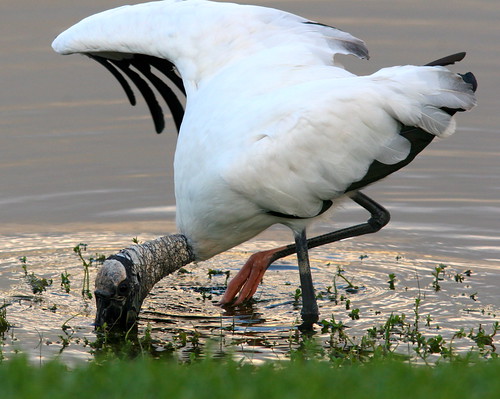
The jaws of a Wood Stork wield tremendous power, and can clamp down on prey in about 25 milliseconds after sensing it, making the snap of its bill one of the fastest reflexes known in vertebrates.
This past week Mary Lou and I witnessed those jaws in action. While walking the boardwalk at nearby Tree Tops Park in Davie, Florida, we approached a Great Egret that had taken up a roost on the railing. To our surprise, it was joined by a Wood Stork.
As we watched , the two birds flew down into the marsh and began foraging together (click on each of these photos for more views):
It is not unusual to see tactile feeders such as storks and ibises hunt together with herons, which are visual feeders. It is likely that both species benefit from this association. The heron frightens fish into the waiting jaws of the stork, and the stork helps stir prey from cover, making them easy targets for the heron.
In this case, there was very little water beneath the vegetation, perhaps an inch or so. The stork was actively prodding into the marsh grass while the egret was stalking alongside its bald-headed neighbor.
Suddenly, the stork came up with a frog in its beak: 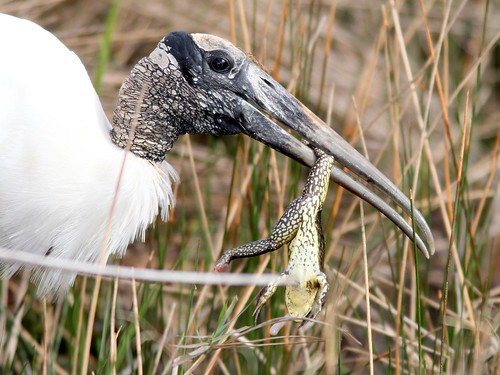
The stork subdued the frog by shaking it and repeatedly crushing it with its jaws; when the frog stopped moving, the big bird swallowed it unceremoniously:
This weekend at Green Cay Wetlands in West Palm Beach County, a marvelous place to spend a long morning, another white wader encountered a hapless reptile:
The White Ibis took many minutes to shake the life out of the snake:
Later, also at Green Cay, we watched as another herp fought for its life: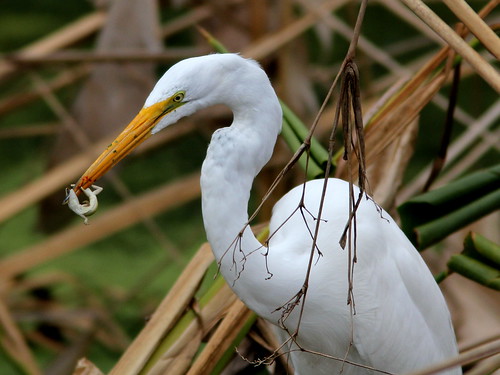
The Green Anole’s jaws were a feeble match for those of the Great Egret:













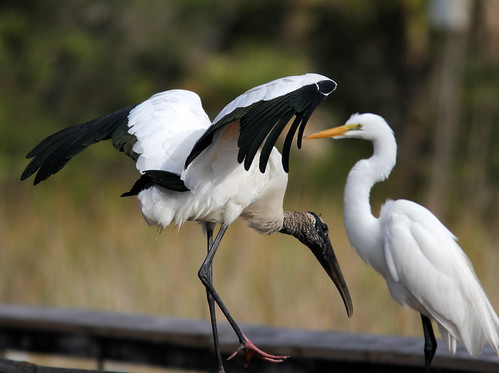
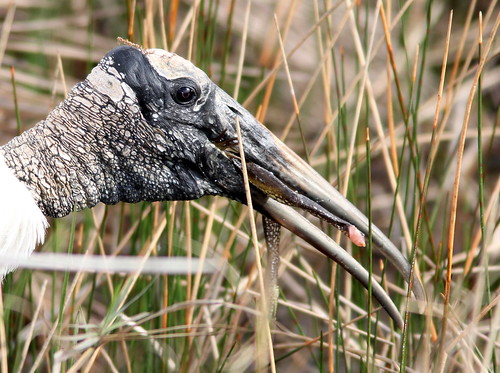
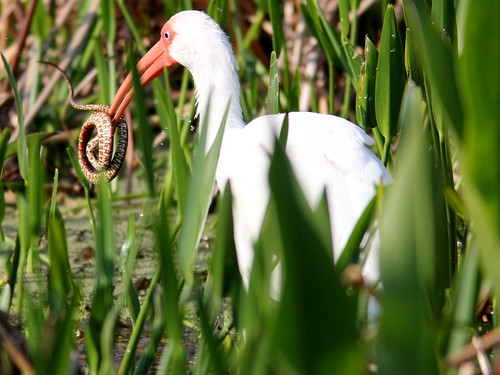
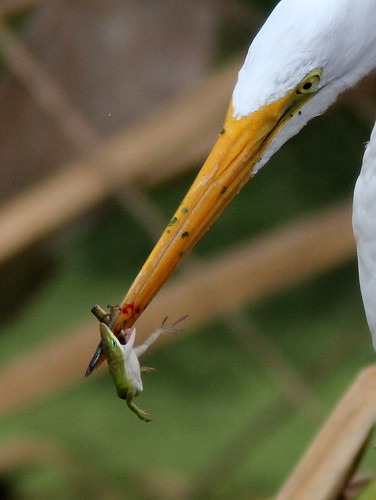
February 23rd, 2011 at 8:27 am What a great series!! Boom & Gary of the Vermilon River, Canada.
February 23rd, 2011 at 8:30 am Super post Ken and the photos of these birds, along with the explanation of their behavior, is very enlightening. Your photographs are excellent , as always.
February 23rd, 2011 at 8:38 am Amazing captures. Great to witness nature like this; not so great for the victims though.
February 23rd, 2011 at 2:44 pm Great images of bird behaviour. This series of images must have taken a lot of patience.
February 23rd, 2011 at 3:23 pm These are some of the most intriguing shots I have seen in a long time. It hard enough just getting a decent picture of these flighty subjects. Somehow you managed to get a story, in this case the life and death struggle behind natures beauty. Thanks for sharing and congratulations on a stellar post!
February 24th, 2011 at 4:14 am A great series of photos and very interesting descriptions of the different feeding behaviors.
February 24th, 2011 at 10:30 am Great post! Your photos and descriptive text give great insight into the lives of these birds!
February 24th, 2011 at 12:19 pm Wow, what a fantstic series with great photos and lots of information. Awesome stuff!
February 25th, 2011 at 7:39 am Great captures, Ken! I have wondered by two species feed together, in my case a Little Blue Heron and a Roseate Spoonbill. You supplied the explanation. Thanks!
February 26th, 2011 at 10:53 pm Wow! Grotesque yet fascinating photos. It makes me want to start singing “The Circle of Life”. Very interesting about the stork making a shaded spot on the water. I had never read that before.